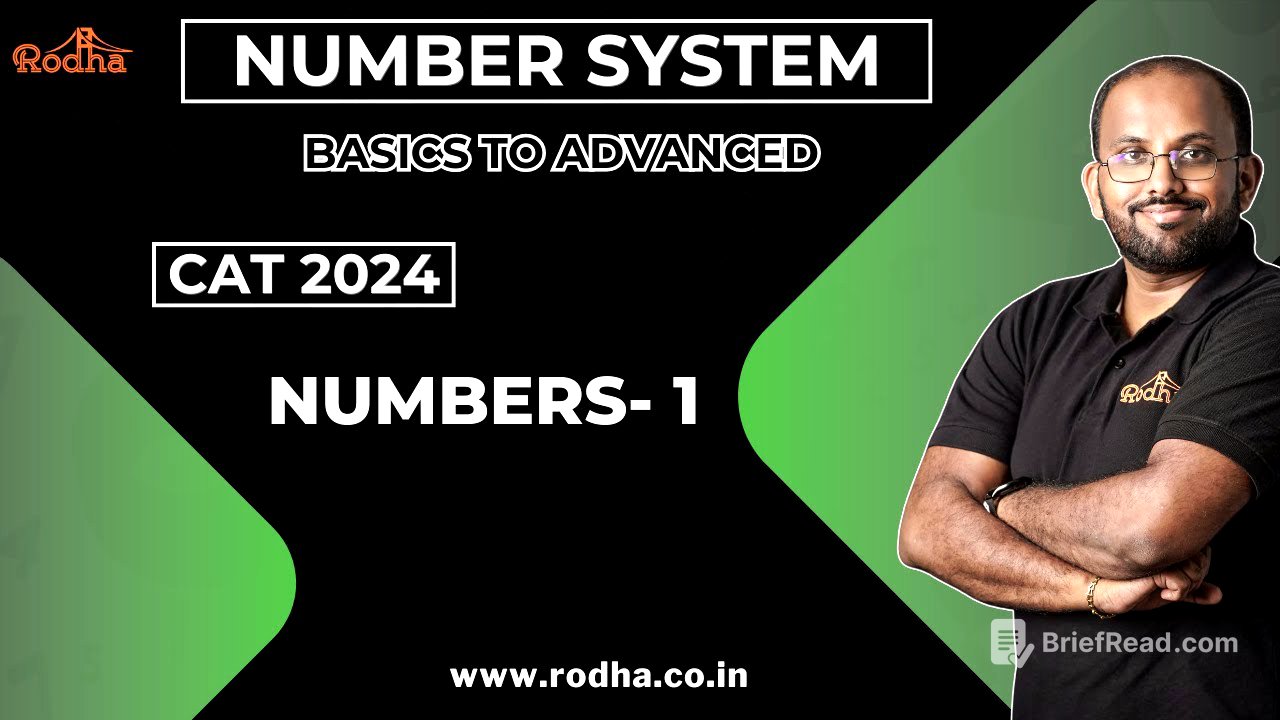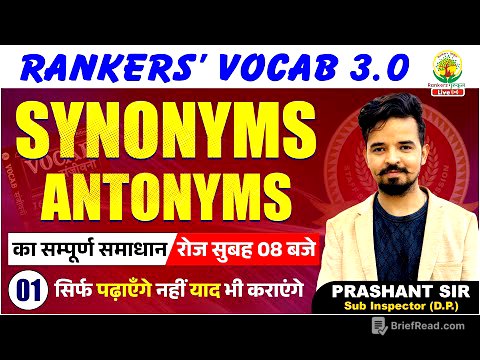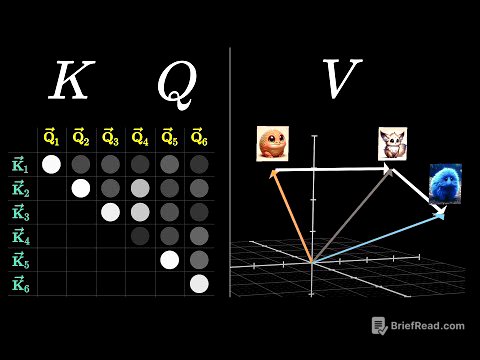TLDR;
Alright, so Larry Prakash is starting a series on "Numbers," which is a super important topic for competitive exams like CAT, SSC, and GMAT. He promises that if you follow his videos, quizzes, and previous year question solutions, you won't find a single question outside of what he covers. The course includes concept videos, quizzes with video solutions, and previous year CAT/XAT questions from 1992 to 2017, all segregated topic-wise. He'll cover everything from basics to advanced concepts, ensuring no question is unanswerable.
- Numbers is a very important topic for competitive exams.
- The course includes concept videos, quizzes with video solutions, and previous year CAT/XAT questions.
- If you follow his videos, quizzes, and previous year question solutions, you won't find a single question outside of what he covers.
Introduction to Numbers [0:14]
Larry welcomes everyone to the "Numbers" series, highlighting its importance for exams like CAT, SSC, and GMAT. He acknowledges that numbers is a vast topic, almost like an ocean, with numerous concepts to grasp. He promises to cover each and every concept in detail. He assures viewers that after completing the three parts of his video series, they won't encounter any question outside of his videos in any exam.
Three Parts of the Video Series [2:04]
Larry outlines the three key components of his numbers course. First, there are concept videos, with over 50 videos covering topics like factors, factorials, remainders, divisibility rules, last digits, and number basics. He claims that if you follow his videos, you won't need any other book. Second, there are quizzes to solve, along with video solutions where he discusses the answers. Third, he'll cover previous year CAT and XAT questions, segregated topic-wise from 1992 to 2017, with over 50 number-related questions and video solutions. Completing these three modules, totaling over 50 hours of video, will leave you without any doubts and ensure you can tackle any numbers question in your exams.
Getting Started with Numbers [4:35]
Larry encourages viewers to engage with the material and reach out on the doubts forum or Facebook page for any questions. He mentions that while some may find the initial basics boring, he'll cover everything from the ground up to advanced concepts. Whether you're a beginner or already knowledgeable, there's something for everyone in these videos.
Classification of Numbers: Real vs. Imaginary [5:18]
Larry starts with the classification of numbers, dividing them into real and imaginary numbers. Imaginary numbers, which cannot be represented on the number line, are mostly out of syllabus for CAT-type exams. However, he suggests remembering a few things like iota (√-1), where i² = -1 and i⁴ = 1, as it can be useful in simplifying algebra and number problems. Real numbers, on the other hand, can be represented on the number line.
Real Numbers: Rational vs. Irrational [7:29]
Real numbers are further classified into rational and irrational numbers. Rational numbers can be written in the form P/Q, where Q is not equal to 0, and P and Q are integers. Recurring decimals with a fixed pattern are also rational numbers (e.g., 0.3333...). Irrational numbers cannot be written in the P/Q form (e.g., √2) and include non-terminating decimals with no fixed pattern.
Rational Numbers: Non-Terminating Decimals with Fixed Patterns [11:39]
Larry explains how to convert non-terminating decimals with a fixed pattern into P/Q form, thus proving they are rational. He demonstrates with examples like 0.232323... and 0.3333..., showing the algebraic manipulation to convert them into fractions. He then generalizes this, stating that a number of the form 0.AAA... is A/9, and 0.ABABAB... is AB/99, and so on.
Advanced Conversions: Handling Non-Repeating Digits [17:16]
Larry tackles a more complex scenario where a decimal has some non-repeating digits before the repeating pattern, like 0.2565656.... He explains the process of multiplying by powers of 10 to align the repeating parts and then subtracting to eliminate the decimal portion, ultimately converting it into P/Q form. He then introduces a shortcut using the bar notation (e.g., 0.25̄6) to represent repeating decimals and provides a direct formula to convert them into fractions.
Summary of Number Classifications [22:57]
Larry recaps the number classifications: Real numbers (representable on the number line) are divided into Rational (convertible to P/Q) and Irrational (not convertible to P/Q). Rational numbers include integers. He then moves on to discuss integers, whole numbers, and natural numbers.
Integers, Whole Numbers, and Natural Numbers [23:37]
Larry defines integers as numbers without decimals (e.g., -4, -3, -2, -1, 0, 1, 2, 3, 4...). Zero is a non-negative as well as a non-positive integer. Whole numbers are non-negative integers (0, 1, 2, 3...), and natural numbers are positive integers (1, 2, 3, 4...).
Odd and Even Numbers [25:12]
Larry defines odd numbers as being of the form 2K - 1 (e.g., 1, 3, 5, 7...) and even numbers as being of the form 2K (e.g., 0, 2, 4, 6...). Odd and even numbers are always non-negative. He clarifies that the starting value of K depends on the specific form used.
Next Steps [27:55]
Larry concludes by mentioning that the next video will cover questions related to odd and even numbers.









